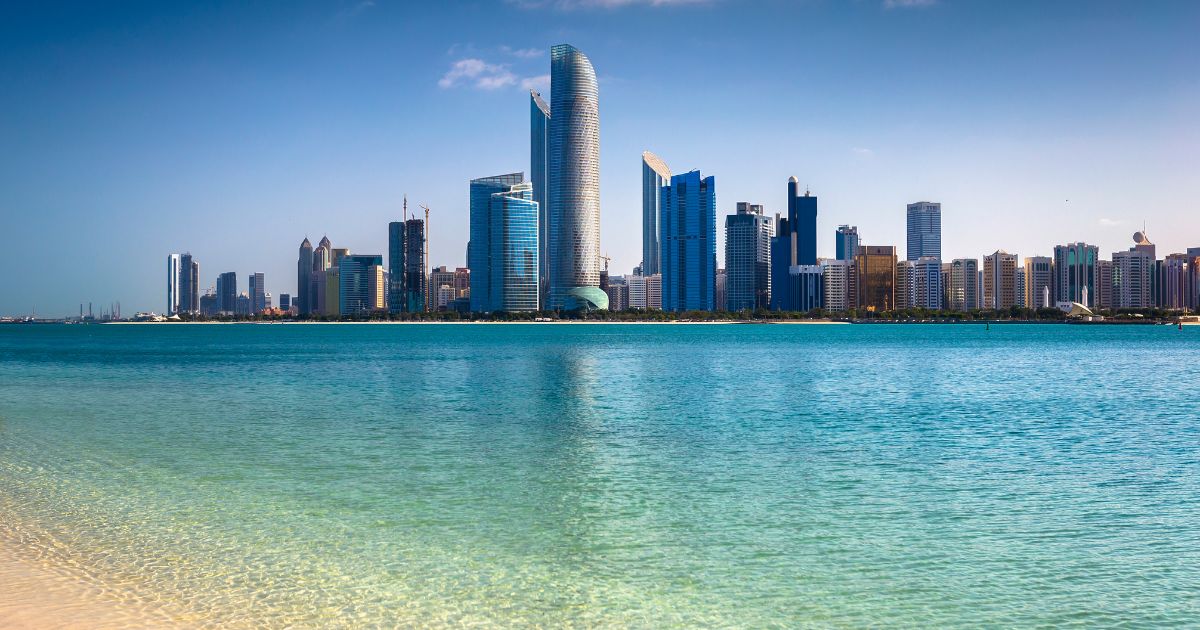Traveling to multiple cities can be a dream come true for any explorer. From world-renowned capitals like Dubai, Paris, Tokyo, and New York to hidden gems tucked away in lesser-known regions, each destination unfolds a new chapter of culture, cuisine, and history. However, planning a multi-city trip can quickly become overwhelming and expensive if you don’t apply the right strategies. You may find yourself juggling flight options, train schedules, accommodation bookings, and an ever-growing itinerary, all while keeping a close eye on your budget. Fear not!
Stay with us, we’ll walk you through every critical step, from selecting the ideal city sequence and securing budget-friendly transportation deals to discovering affordable lodging options and mastering money-saving hacks on the ground. Whether you’re a digital nomad, a solo wanderer, or a family adventurer, you’ll discover actionable tips to stretch your travel dollars further. By the end of this post, you’ll be equipped with the knowledge to become a city-hopping maestro, ready to explore multiple destinations without draining your wallet. Let’s dive in and make your dream multi-city adventure a reality!
Choosing Destinations that Make Cents

Selecting the right combination of cities is a fundamental step in planning a cost-effective multi-city trip. Start by identifying places where the local currency is favorable—currencies with lower exchange rates compared to your home currency can significantly increase your purchasing power. For example, travelers from the US or Europe might find that cities in Southeast Asia or Eastern Europe offer exceptional value for money. Additionally, research cities with robust budget airline networks or where train and bus travel are both efficient and inexpensive. Consider pairing popular hotspots (such as Barcelona or Prague) with emerging destinations (like Sofia or Belgrade) to balance sightseeing highlights with more affordable accommodations. Another money-saving strategy is to visit cities during the shoulder seasons, the periods between high and low travel seasons, when accommodation prices and flight costs drop, but the weather remains pleasant. Finally, think about geographic proximity and logical routing: planning your route in a logical geographical order (rather than crisscrossing back and forth) will save you both time and money on transportation.
Finding Affordable Transportation Between Cities

Transportation costs can quickly consume a large portion of a travel budget, especially when hopping between multiple cities and countries. To minimize expenses, book in advance whenever possible—many budget airlines release their cheapest seats months ahead of departure. When booking flights, compare budget carriers with traditional airlines and consider creating flight alerts on websites like Skyscanner or Google Flights to catch flash sales. For overland travel, sleeper trains and night buses can be a strategic choice: they let you save on one night’s accommodation while maximizing daylight hours for exploration. Research regional rail passes, such as the Eurail or Interrail passes in Europe, and explore multi-country bus passes in regions like Southeast Asia or South America. Don’t hesitate to mix and match modes of transport: sometimes a short flight combined with a scenic train ride can be both cost-effective and enriching. Lastly, remain flexible with your departure and arrival times; traveling mid-week or at less popular hours often yields lower fares.
Budget-Friendly Accommodations
Securing affordable lodging doesn’t mean sacrificing comfort or local flair. Hostels have evolved beyond crowded dorm rooms—they now offer private capsules, female-only floors, co-living spaces, and social events that foster connections. Platforms like Hostelworld and Booking.com allow you to filter for budget options with high guest ratings. If you prefer more privacy, explore private rooms in guesthouses or family-run B&B establishments, where you’ll often receive personalized hospitality and insider tips for free. Vacation rental platforms, such as Airbnb and Vrbo, can also offer excellent deals, especially for more extended stays or when traveling in small groups. To further reduce costs, consider accommodations with kitchen facilities—cooking your own meals, even occasionally, can lead to substantial savings. When planning, it’s wise to create a travel budget in advance, as this helps you make wise lodging choices without overspending. Finally, read reviews carefully to ensure safety, cleanliness, and proximity to public transportation; a slightly higher nightly rate in a convenient location might save you more in transit costs and taxi fees.
Crafting a Flexible Itinerary

An effective itinerary should strike a balance between must-see attractions and spontaneous exploration. Begin by listing your top landmarks, museums, and experiences in each city, but also allocate time for wandering through neighborhoods, discovering local cafes, or stumbling upon street festivals. Before finalizing your schedule, research city passes—they can offer significant discounts on bundled attractions and public transport. For example, the Paris Pass or the New York CityPASS can save you up to 50% on admission fees. Seek out free walking tours led by local guides; these tours usually operate on a tip-based system, so you control how much you pay. Remember to leave buffer days or half-days to allow for unexpected recommendations from fellow travelers you meet along the way. A rigid, back-to-back itinerary can lead to burnout and unnecessary spending on last-minute transport or accommodations. Flexibility is key: if you fall in love with a city, consider extending your stay and skipping a less appealing destination. The freedom to adjust your plans on the fly is what makes multi-city travel so exhilarating.
Smart Packing for City Hopping

One of the simplest ways to save money on a multi-city adventure is by packing light. Excess baggage fees on budget airlines can add up quickly, so aim to travel with just a carry-on whenever possible. Choose neutral, mix-and-match clothing items that can layer easily for varying climates, and limit yourself to two pairs of shoes: one comfortable walking pair and one slightly dressier option. Packing cubes and compression bags are invaluable for organizing and maximizing luggage space. Don’t forget essential travel gadgets, such as a portable charger, universal adapter, and a reliable travel lock. Preparing a comprehensive travel packing list before you go ensures you bring everything you need without overpacking. Packing smart not only cuts costs but also reduces physical strain as you move from one city to the next. If you need to launder clothes, look for laundromats or guesthouses that offer laundry services, which are often more affordable than hotel laundry services. Lastly, leave room in your bag for souvenirs or local products you purchase along the way.
Eating Out Without Overspending
Savoring local cuisine is a highlight of any trip, but restaurant meals can quickly inflate your daily budget. Start your mornings with coffee and a pastry from a local bakery, and then visit daily markets to pick up fresh produce, cheese, bread, and snacks. Markets like La Boqueria in Barcelona or Tsukiji Outer Market in Tokyo offer gourmet tasters at affordable prices. For lunch, look for set menus or prix fixe options—many restaurants offer a multi-course meal at a reduced rate during the midday hours. When dinner time rolls around, explore neighborhood eateries away from major tourist sites; these family-owned spots often serve authentic dishes at local prices. Sharing tapas-style plates or family-style meals can also stretch your budget while allowing you to sample a wider array of flavors. Don’t overlook street food vendors and food trucks; these on-the-go options are not only inexpensive but often represent the heart of a city’s culinary scene.
Embracing Free and Low-Cost Activities
Cost-free experiences can be just as memorable as ticketed ones. Many cities host free museum days or discounted admission evenings—check official tourism websites or social media for calendars and reminders. Parks, botanical gardens, and public plazas are perfect for picnics, people-watching, and impromptu photography sessions. Hiking trails on the city outskirts, such as those in Griffith Park, Los Angeles, or the hills around Rio de Janeiro, offer breathtaking views at no cost. Cultural neighborhoods, street art districts, and local festivals provide immersive experiences that won’t break your budget. If you’re traveling solo, consider joining free community events, language exchange meetups, or university campus tours to connect with locals and fellow travelers. Remember, some of the best adventures happen when you least expect them—leave room for serendipity.
Using Technology to Save Money

The right apps and websites can be game-changers for budget travelers. Use flight comparison tools like Skyscanner and Momondo to track fares across airlines and set price alerts to stay informed. For overland travel, apps such as Rome2rio and Omio offer comprehensive route and schedule planning. Accommodation deals can be found on HotelTonight or LastMinute, especially for last-minute bookings. When it comes to food, apps like MealPal and Too Good To connect you with discounted meal plans and surplus restaurant food at reduced prices. Expense-tracking apps like Trail Wallet or Splitwise help you stay on track with your daily budgets and share costs when traveling in groups. Language translation tools, offline maps, and digital guidebooks reduce the need for costly paper alternatives and help you navigate like a local. By integrating technology into your travel routine, you can streamline your experience and uncover opportunities to reduce costs.
Safety and Health on a Budget
Maintaining your well-being while traveling doesn’t have to come with a hefty price tag. Comprehensive travel insurance is non-negotiable; look for policies that offer essential medical coverage and trip cancellation protection, often available at reasonable rates. Carry a compact first-aid kit with bandages, pain relievers, and any necessary prescription medications. Research local health clinics and pharmacies in each city—knowing where to turn in case of an emergency can save you time and anxiety. Keep digital and physical copies of important documents, and store them separately from your main wallet. For personal safety, use trustworthy apps for rideshares and always trust your instincts in unfamiliar areas. Staying hydrated, eating balanced meals, and getting adequate rest are simple practices that prevent costly health setbacks. Finally, register with your embassy or consulate when traveling abroad, so they can assist you if needed.
Final Tips for a Successful Multi-City Budget Trip

As you gear up for your epic city-hopping journey, keep these extra pointers in mind:
- Plan and book as much as possible in advance, but be open to last-minute deals that align with your itinerary.
- Carry multiple payment methods, including a backup credit card and local currency.
- Stay organized with digital checklists and travel apps, but leave room for spontaneity and unexpected discoveries.
- Document your travels with photos, journaling, or blogging to reflect on your journey and refine future plans.
- Respect local customs and regulations to avoid fines and additional expenses.
- Build in rest days to recharge physically and mentally, ensuring you make the most of each destination.
Planning a multi-city adventure on a budget may seem daunting, but armed with these strategies, you’re ready to embark on an unforgettable journey. From selecting the most cost-effective destinations and transport modes to maximizing free experiences and leveraging technology, you now have a blueprint for success. So pack your bags, map out your route, and set off on the ultimate city-hopping expedition—without breaking the bank!







